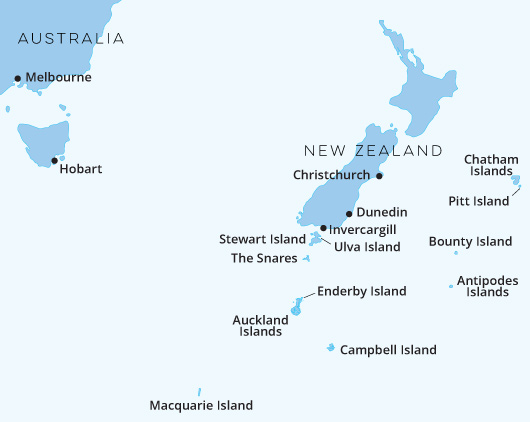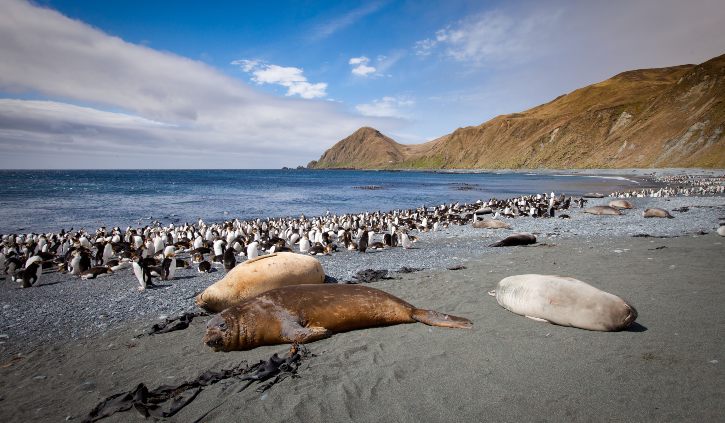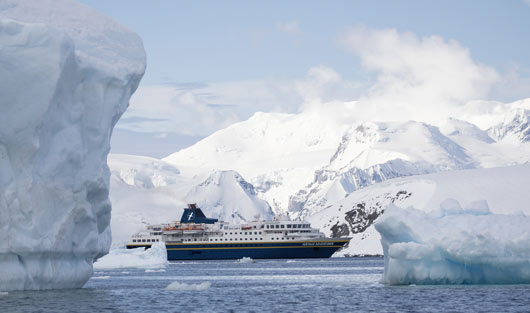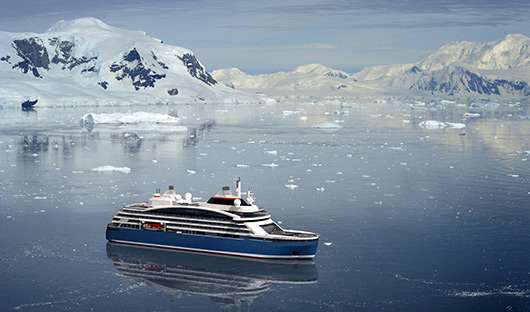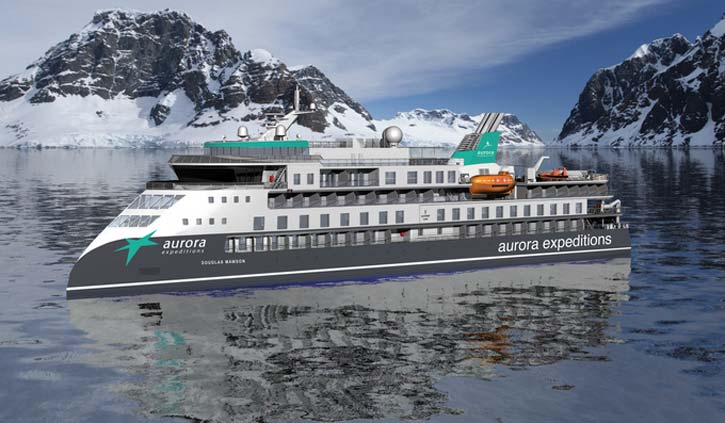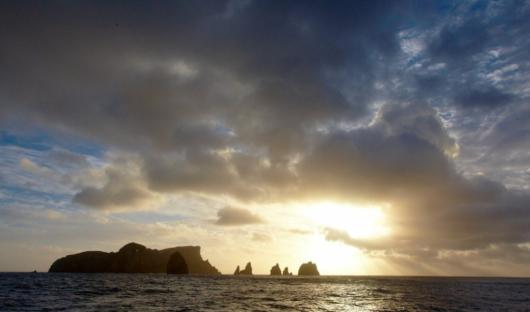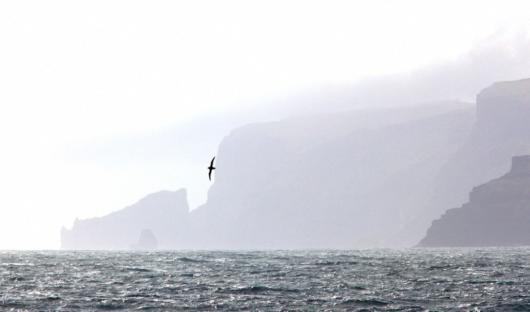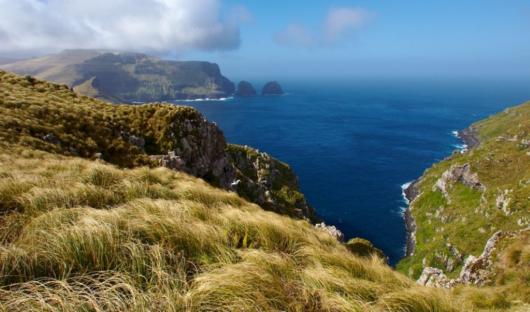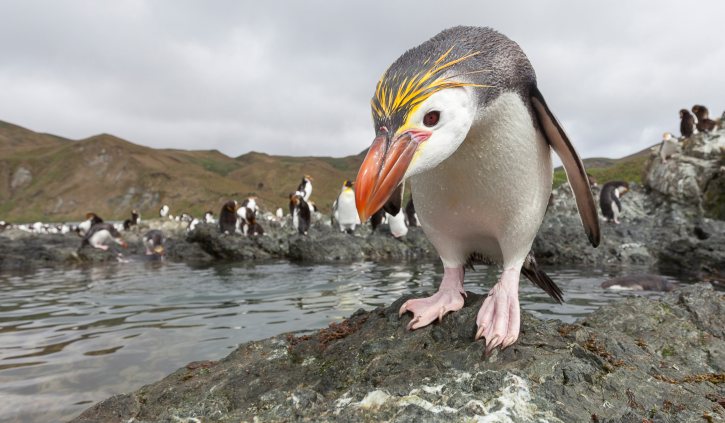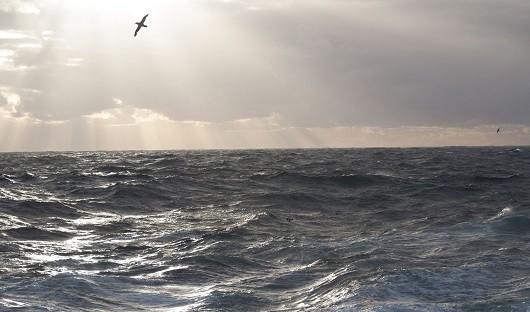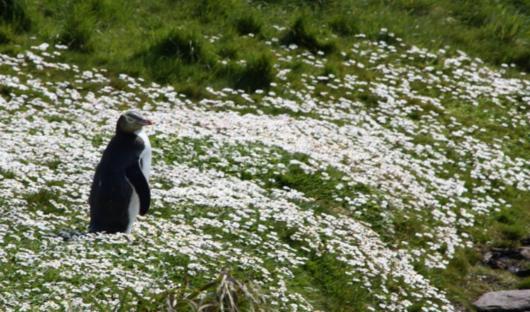
New Zealand and Australian Sub Antarctic Islands
EXPEDITION CRUISES
The sub-Antarctic is an area located immediately north of the Antarctic region, roughly to a latitude of between 46° and 60° south of the Equator. The subantarctic region includes many islands in the southern parts of the Atlantic, Indian, and Pacific oceans, especially those situated north of the Antarctic Convergence.
There are about 20 archipelagos of sub-Antarctic Islands some like Tristan da Cunha, Crozet, Gough, Kerguelen and Amsterdam are infrequently visited, or solely explored by ships and traveller’s wanting to tick off rarely and perhaps site-specific wildlife; like the Eaton’s pintail on Crozet (which also has over 2 million pairs of macaroni and 700,000 pairs of king penguins penguins). Many Antarctic cruises visit the Falkland Islands and South Georgia, here we take a closer look at Macquarie Island, Australia’s only sub Antarctica Island, and New Zealand’s sub-Antarctic Islands of: The Snares, Auckland and Campbell.
Despite the Islands being thousands of kilometres apart they have one very common aspect; they are home to incredible populations of seabirds, seals and plant life which is often unique to the Island or group of Islands.
HIGHLIGHTS
Macquarie Island
Macquarie Island is Australia’s only sub-Antarctic Island, despite being closer to New Zealand it was claimed for Australia in 1810 and named after the then NSW Governor Lachlan Macquarie, it was later transferred to the Colony of Tasmania. Fortunately for Australia a request to transfer the island to New Zealand in 1890 was declined or we’d have lost this amazing Island. All that said Australia and New Zealand worked closely on a pest eradication programme that successfully rid the island of rabbit and rodents.
In some ways Macquarie Island is like the Sub-Antarctic Island of South Georgia; being home to millions of birds, fur and elephant seals. Several species are shared, like the wandering albatross and king penguins. Others are endemic to this small island; Royal penguins and Macquarie shags.
King, gentoo, rockhopper and Royal Penguins (which are only found here). There are several species of petrel, shearwater and prions also nesting on the island; several of which have only recently returned to the island as a result of the pest eradication programme.
Rabbits were introduced to the island as a food source in the 1870’s – not long after rats and mice also colonised the island. In 2000 the feral cats that had also made home on the island were eradicated, the unintended consequence was that rabbit and rodent numbers increased significantly. The resulting damage caused to the vegetation led to land-slips and rats preyed on the eggs and chicks of many burrowing bird species. Finally after considerable lobbying in 2007 it was agreed to fund ($24.6 million) the eradication of rabbits and rodents, in 2010 the programme started, in late 2011 it was announced that the island was free of rabbit s and rodents.
Four species of seals make Macquarie their home. Southern Elephant seals, the largest of all seal species, with males tipping the scales at 4,000kg, 20-30,000 Southern elephant seals can be found here.
The seal industry, just like on South Georgia, almost wiped out the seal populations found here – with over 200,000 seals being taken. Slowly seal numbers have increased several hundred Antarctic Fur, Sub-Antarctic Fur and Long-nosed seals can bee seen Occasionally Hooker’s Sea Lion will be observed on Macquarie; they breed on the Auckland Island group, heading to Macquarie to feed in the rich waters that surround the island.
Wandering, grey-headed, black-browed and light-mantled albatross breed on Macquarie Island. In the waters around the island there is the chance to see several other species including: white -capped, Chatham’s, Royal, and Salvin’s Albatross.
The Snares

Introduced land mammals were never established on the Snares, making it one of the most untouched and pristine areas in New Zealand. The Sooty Shearwater is the most populous bird on the Snares with over 2 million birds breeding here.
Snares Crested Penguins are endemic to the Islands with about 25,000 pairs.
Cape Petrel and Buller’s Albatross nest on the imposing cliffs. You are also likely to encounter Antarctic Terns, White-fronted Terns, Red-billed Gulls, Tomtits and Fernbirds.
On the rocky shores you will also find New Zealand fur seals as well as New Zealand (Hooker’s) sea lion.

Enderby Island


Enderby Island is part of New Zealand’s Auckland Islands archipelago. Like Macquarie Island Enderby is another Island that had introduced species removed just much earlier; in 1994 cattle, pigs, rabbits and rats, just as with Macquarie the recovery was very noticeable. Enderby has three endemic species the Auckland shag, Auckland teal and Auckland snipe. Yellow-eyed penguins also nest on the island’s forests as do red-crowned parakeets. The island is also home to ‘megaherbs’ in this case the stilbocarpa robusta.


Campbell Island
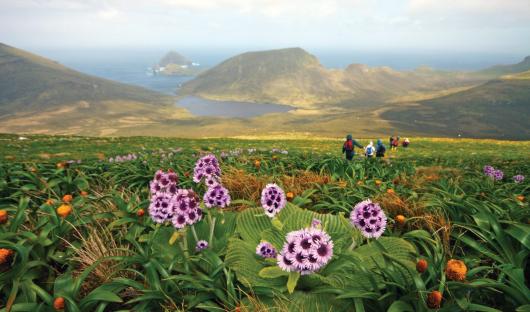
Although for 215 days of the year Campbell Island only receives one hour of sunshine per day, it should not be held against it. As the only permanently inhabited island of the Sub Antarctic region, Campbell Island has an interesting history. In 1895, the New Zealand government thought it was feasible to use the island as farmland and although it was tried and tested many farmers were unable to bear the remoteness of the island and left. The then mayor of Gisborne advertised the island as a place for whaling and for 7 years hunters came for the rare and now protected southern right whales. The only evidence now of the once farming land is the 1100 sheep which are restricted to certain areas of the island. The desolateness of the island is also proven by what the Guinness World Record’s has awarded as the “loneliest tree on earth”. But the baron land is made famous by the megaherbs that grow throughout the island during summer, which colours can be seen up to 2 kilometres from shore.
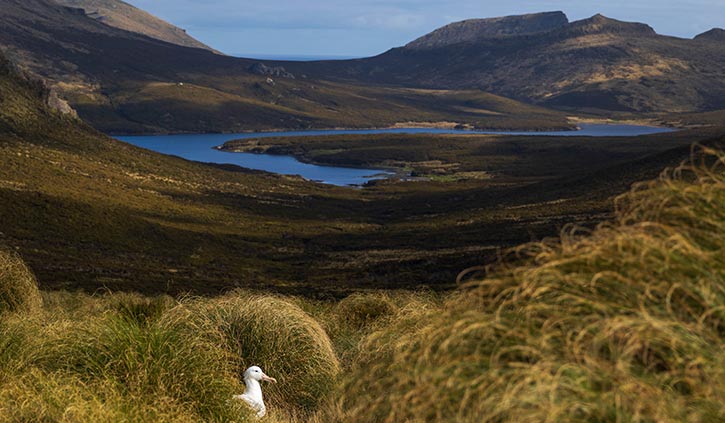
Chatham Island

The Chatham Archipelago consists of one large island and numerous smaller islands and rocky islets. Only two of the islands are inhabited. They represent New Zealand’s eastern most territory. The islands were originally settled by East Polynesians. In the 1400s the population became isolated and interestingly developed its own distinct culture. The islands were discovered by Europeans in the 1790s. Sealers and settlers followed and then in the 1830s Maoris from New Zealand invaded killing and enslaving many of the indigenous people.
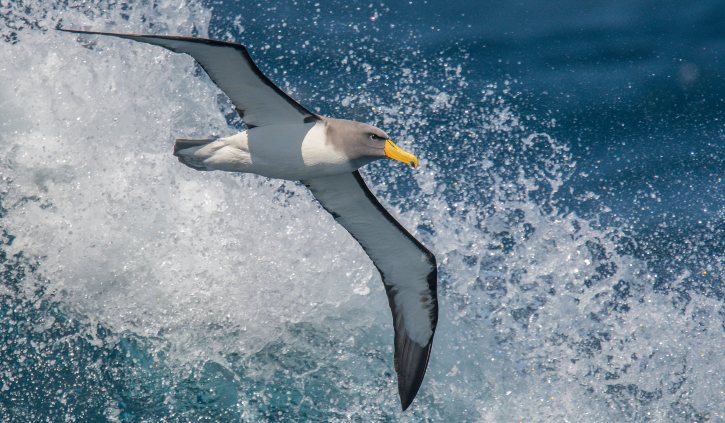
A SELECTION OF SHIPS
The Heritage Adventurer (formerly the MS Hanseatic) is a modern, ice-strengthened Antarctic cruise ship with all en-suite cabins accommodating up to 146 guests. Purpose built for polar waters in Rauma Finland, the Heritage Adventurer not only has the highest ice class rating (Lloyds 1AS) she also offers unmatched stability and superior speed to get you to your destination and out exploring.
Heritage Adventurer has an impressive history of Polar exploration. Having held records for the most northern and southern Arctic and Antarctic navigations, and for traversing both the Northwest and Northeast Passages.
Originally designed to accommodate 184 guests, Heritage Adventurer now welcomes just 140 expeditioners ensuring spacious, stylish and comfortable voyages, while a fleet of 14 Zodiacs ensures all guests are able to maximise their expedition adventure.
Hailing as the world’s first hybrid luxury polar exploration vessel, the Le Commandant Charcot combines the top tier of luxury with sustainable development at the heart of the design. Equipped with 135 luxury staterooms featuring elegant and warm stone, wood and leather detailing’s to reflect the natural environment that the ship will be sailing in, the Le Commandant Charcot is setting a new level for opulence in the polar regions. Guests are spoilt for choice when it comes to places to relax and unwind on-board with an abundance of social areas to choose from ranging from two pools (indoor and outdoor), a beauty corner, theater, three different lounges, multiple reception areas and different restaurants to choose from.
What makes the Le Commandant Charcot so special is her ice-breaking capabilities allowing her to travel to the furthermost, remote reaches of the globe whilst still experiencing unprecedented luxury. Electricity integrates with engines running on Liquefied Natural Gas (LNG) exceeding the current applicable environmental regulations with the capability of hybrid electric mode which produces zero emissions. She has on board recycling of waste and an advanced wastewater treatment along with waste heat recovery systems in place. Le Commandant Charcot also has a scientific laboratory on-board equipped to study the ecosystems and biodiversity of the polar settings that you are exploring.
Setting sail in 2025, the Douglas Mawson is a new state-of-the-art ship and the last in a line of purpose-built vessels that have redefined small ship expedition cruising.
Named after the legendary Australian geologist and explorer, this new small ship embodies Mawson’s pioneering spirit and is designed for global discovery. Featuring the revolutionary Ulstein X-BOW® and purpose-built with enhanced sustainability features, it takes on average 154 adventurers to the world’s wildest places in smooth, quiet comfort. It boasts an extensive range of cabins yet, including a range of single cabins.
The Douglas Mawson features a host of amenities to help you connect with like-minded travellers and elevate your time onboard your floating base camp for adventure. After a long day of exploring, head to the back deck to swim in the heated outdoor swimming pool, find a sun bed to read on, or soak in one of two Jacuzzis. Work up a sweat in the gym before unwinding in the sauna, resolve to learn something new in the Citizen Science Centre, then enjoy a delicious meal with new and old friends in one of two restaurants. Or, with multiple observation areas throughout the ship, simply relax in comfort while you keep watch for wildlife or incredible landscapes that unfold before you
2024-25 Cruises
Sorry, no posts matched your criteria.
For more information on the ships and travel options we offer, call 1300 784 794 or email contact@antarcticatravelcentre.com.au


